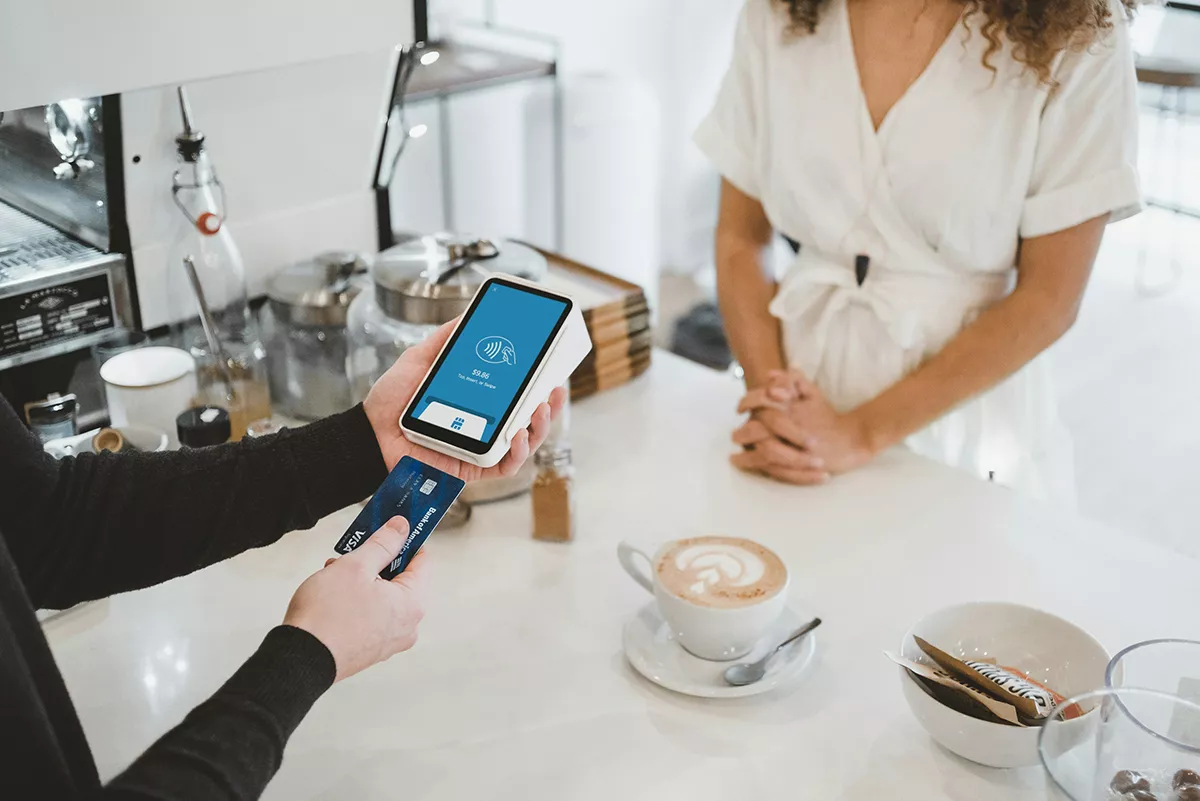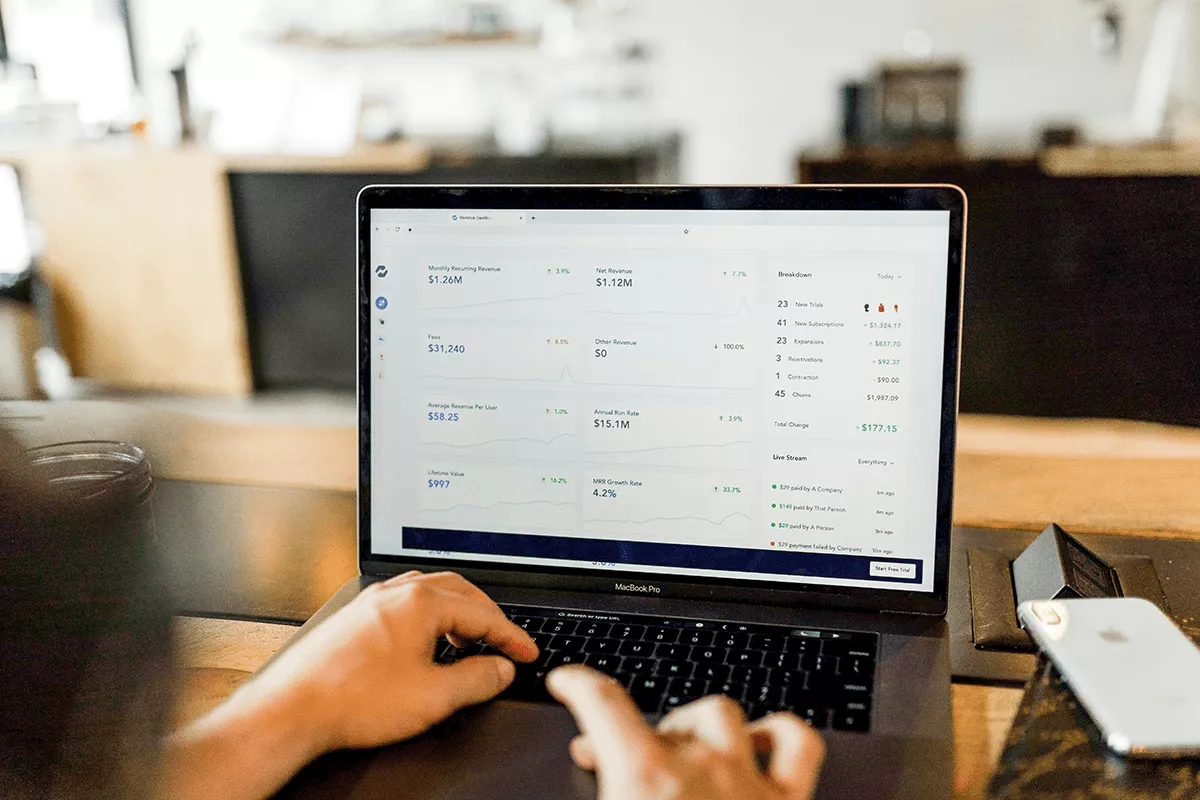We’ve been there before; that stolen moment in a day when we find ourselves daydreaming of owning a business. Perhaps we were motivated by an epiphany that whatever we do, we’ll always be wage earners. Our boss will always make more money than us.
We may have been influenced by a moment of inspiration to have the power to transform the lives of the downtrodden citizens in the society. Business after all is a powerful lever of transformation. Abundant resources result in the capacity to build lives and societies.
Regardless of the reason, everyone wants to own a business. However, not everyone is willing to put in the time, resources, and effort to manage one. Once the daydreaming starts and the reality of business and its inherent risks hits home, most budding entrepreneurs remain as they were: daydreamers.
Entrepreneurship requires a special kind of person; someone who is willing to risk it all for the fulfillment of a dream. The statistics are not encouraging for individuals who want to attempt entrepreneurship. Only 55% of start-up businesses remain operational after five years. Nearly 80% have closed by year 10.
These figures are downright frightening for anyone who wants to become an entrepreneur. However, risk is a constant companion in entrepreneurship.
By definition, entrepreneurs are risk takers. They want to be in the driver’s seat all the time. They take chances but do not mistake their risk-taking nature as that of gamblers. The difference between entrepreneurs and gamblers is that entrepreneurs take calculated and educated chances. Gamblers are reckless, have no discipline, and usually give in to their weaknesses.
If an entrepreneur is a special kind of person, what then is a successful entrepreneur?
Blessed?
Lucky?
Kissed by God?
A successful entrepreneur is all that and more! Despite the horrifying statistics, anyone can be a successful entrepreneur. Here is one way to look at the statistics:
Using 2012 World Bank data as basis, let us assume that 16,000 new businesses are registered in the Philippines every year. Assuming that 98% of new businesses are small, we can make an educated guess that 15,680 small businesses run by budding entrepreneurs are registered annually. In five years, only 8,624 of those businesses will still be around.
A total of 8,624 is still a considerable number! Whether they are profitable or not is another story. However, you should focus on enterprises that continue to stimulate the economy by generating aggregate demand and providing employment.
If you are still scratching or shaking your head in disbelief, give yourself time to process the information. In the meantime, be inspired of these stories from 10 of the most successful entrepreneurs in the Philippines.
At the end of the article, you will be able to determine the ONE quality that made them succeed while others failed.
Table of Contents
ToggleTop 10 Most Successful Entrepreneurs in the Philippines
1. Henry Sy, Shoe Mart
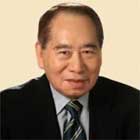 SM is more than just a shopping mall. It is a beloved institution. Many of my favorite memories happened in SM. From shopping, watching blockbuster movies, date night, ice skating to food tripping, SM has it all.
SM is more than just a shopping mall. It is a beloved institution. Many of my favorite memories happened in SM. From shopping, watching blockbuster movies, date night, ice skating to food tripping, SM has it all.
However, this gigantic chain of more than 44 large-scale shopping centers in the Philippines and throughout Asia has very humble beginnings.
Henry Sy came from an impoverished family in Jinjiang, a town near Xiamen, China. The entire family left China in 1936 to help the family patriarch manage a thriving convenience store in Manila.
Unfortunately for the family, their store was burned down during World War II. However, business-minded Henry saw an opportunity selling used military combat boots and other postwar goods from supportive American soldiers!
His success led to the opening of his first shoe store, the SM in Avenida, Manila. Henry had problems finding shoe manufacturers who could design shoes according to what he had in mind, but he persisted. He spoke to customers and built his own network of suppliers and manufacturers.
That never-say-die attitude got Henry Sy to where he is now: one of the richest men in the world and a world-class commercial center developer who provides opportunities to both entrepreneurs and the working class!
2. Tony Tan Caktiong, Jollibee
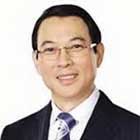 If you thought you only loved The Champ and Chicken Joy, then be prepared to be inspired by the man behind the franchise.
If you thought you only loved The Champ and Chicken Joy, then be prepared to be inspired by the man behind the franchise.
Also coming from an immigrant family from China, Tony learned the value of hard work and dedication from his father who worked as a cook in a Buddhist temple. Tony’s father started a Chinese restaurant in Manila with his savings so he can send him to college.
In 1975, Tony bought a Magnolia ice cream parlor. However, it was not generating enough business. After talking with his customers and people within the neighborhood, Tony decided to include sandwiches, fried chicken, and French fries in the menu. In time, the restaurant found itself packed to overflowing capacity.
By 1978, Tony had opened six more restaurants, but the main item was no longer ice cream. Tony then decided to adapt the McDonald’s concept and named his franchise after his work ethic of being as “busy as a bee.”
Today Jollibee has grown to more than 2,500 stores in the Philippines plus locations in the US, China, Saudi Arabia, Vietnam, Singapore, and Brunei.
3. John Gokongwei Jr., JG Holdings
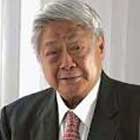 John’s life story is a “rich-to-rags-to riches” story. John Jr. was born in China to the scion of one of the wealthiest families in Cebu.
John’s life story is a “rich-to-rags-to riches” story. John Jr. was born in China to the scion of one of the wealthiest families in Cebu.
When the father died, so did the business and the family fortune was soon gone. John Jr. supported his family by peddling items along the streets of Cebu by bike. Soon, he was trading items by boat to Lucena City and to Manila by truck. Eventually, he started importing items from the US.
John Jr. soon realized that importing carried too much risk and low margins. Thus, in 1957, he borrowed Php 500,000 from China Bank and started a corn milling business named Universal Corn Products.
By 1961, Universal started diversifying its products and launched several popular brands such as Blend 45. Universal Corn Products was renamed Universal Robina Corporation.
Today, the Gokongwei family owns several successful and highly diversified businesses. Among these are Robina Land Corporation and Cebu Pacific.
4. Socorro C. Ramos, National Bookstore
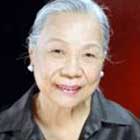 The next time you buy your batch of new school supplies and textbooks, do not forget to thank Ms. Socorro C. Ramos!
The next time you buy your batch of new school supplies and textbooks, do not forget to thank Ms. Socorro C. Ramos!
Her story is a stuff for telenovela, and frankly, I’m surprised the networks and movie outfits have not caught on. How’s this for a plot teaser?
Girl’s brother marries scion of a wealthy bookstore owner in Manila. The girl finds job as a saleslady at 18, meets and falls in love with the son of the owner; thus, he is technically her in-law! Their parents forbid the relationship and sends the girl back to the province. However, their love is so strong, girl and boy stand up to the parents, get married, and have twins.
The boy takes over a branch with the girl, and they renamed it in National Book Store. However, a war breaks out, and the store is destroyed! They rebuild the store, but everything is held under suspicion of being “questionable.” They relocate the store in Avenida, but as the business picks up, a storm destroys their roof. Soon, they rebuild the store, and every centavo is used to build a nine-story National Book Store.
The girl is Socorro and the boy is Jose. Today, National Bookstore has grown to over 100 stores. Despite digital technology, it continues to flourish!
5. Cecilio Kwok Pedro, Lamoiyan Corporation
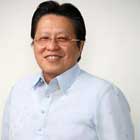 Cecilio’s life is not a typical rags-to-riches story; instead, it embodies the entrepreneurial spirit of overcoming seemingly insurmountable odds.
Cecilio’s life is not a typical rags-to-riches story; instead, it embodies the entrepreneurial spirit of overcoming seemingly insurmountable odds.
Cecilio used to head Aluminum Container Inc., which produced the aluminum toothpaste tubes for Procter and Gamble, Philippine Refining Company (now Unilever), and Colgate-Palmolive. However, environmental concerns led his clients to shift to plastic-laminated toothpaste tubes. Aluminum Container Inc. failed and closed its shop in 1986.
He put up Lamoiyan Corporation and manufactured toothpaste that was priced 50% lower than his competitors. These included the still-popular brands Hapee and Kutitap. Although the foreign brands countered by lowering their brands by 20%, Cecilio responded by introducing toothpaste targeted for children that featured the characters from Sesame Street.
Cecilio’s brands have made it to other markets in Asia, such as China, Vietnam, and Indonesia.
Cecilio’s greatest accomplishment was not limited to manufacturing. He is also known for his advocacy to help hearing-impaired people find employment in the country.
His programs include free housing for more than 30 deaf–mute staffs. To date, more than 180 hearing-impaired students have received college education through DEAF or Deaf Evangelistic Alliance Foundation.
6. Mariano Que, Mercury Drugstores
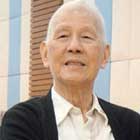 Many of today’s entrepreneurs would learn the value of customer experience and innovation through Mariano Que.
Many of today’s entrepreneurs would learn the value of customer experience and innovation through Mariano Que.
Like many of the entrepreneurs discussed so far, Mariano found opportunities for entrepreneurship after World War 2. Mariano had been working in a local drugstore when the war destroyed several businesses in the city.
Mariano saw the need to supply sulfa drugs, which were used to treat bacterial infections. He started to buy sulfa tablets and sold them at affordable prices. Soon, other people followed and adapted Mariano’s strategy.
However, only Mariano sold high-quality sulfa tablets, which ensured him a steady clientele. With his hard work and dedication to build up savings, he was able to put up his first drug store in 1945, which he named Mercury Drug. The Roman god Mercury is known for speed. He also carries the caduceus, which is a symbol in the medical industry.
Mariano invested his earnings into the company and introduced many innovations in the service. Among these innovations were a drug-delivery service to clients and locations that are open 24/7 because he knew people would be needing medicines any time of the day.
By the time Mariano opened his second Mercury Drug at the newly constructed Ayala shopping center in Makati, he had invested in technological innovations, such as biological refrigerators and computer-guided controls.
Mariano’s dedication to his business has allowed Mercury Drug into 700 stores and a widely recognized name for quality pharmaceuticals.
7. Alfredo M. Yao, Zest-O
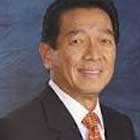 The next time you pass a vendor peddling goods on the street, keep in mind that he or she can be supporting the next Alfredo M. Yao.
The next time you pass a vendor peddling goods on the street, keep in mind that he or she can be supporting the next Alfredo M. Yao.
When Alfredo lost his dad at age 12, his mother was left to support him and his siblings by becoming a sidewalk vendor. A relative was able to give financial aid, which allowed Alfredo to reach, but not complete, college at the Mapúa Institute of Technology.
Alfredo took several odd jobs, which included time at a printing press. During his stay there, Alfredo learned how to print cellophane wrappers for candies and biscuits. His experience prompted him to start his own printing business.
His printing business was doing well. However, his discovery of the Doy Packaging system from Europe was the turning point of his entrepreneurial career. He tried to sell the system to juice manufacturers, but no one was interested. Thus, Alfredo ventured into the juice business by concocting flavors in his kitchen.
These juices were not only delicious but also appealing to parents as they found the light and brightly colored packs easy to include in their children’s lunch boxes. Best of all, the packaging allowed the juice to stay chilled longer. Zest-O was born!
Today, Zest-O controls 80% of the juice market, and it has expanded to markets in Australia, China, New Zealand, Korea, Singapore, US, and several countries in Europe. Alfredo’s entrepreneurial success has revitalized the juice region in the Philippines particularly farmers growing dalandan. The Doy packs are also recycled by local cottage industries into handbags for export to other countries!
The boy who once faced the harsh realities of life now become a successful juice manufacturer. Alfredo has diversified his business interests into airlines by acquiring Asian Spirit Airlines and renaming it as Zest Air.
Alfredo is now literally on top of the world!
8. Corazon D. Ong, CDO Foodsphere
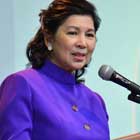 Corazon represented the value of having passion in what you do as a motivating factor in finding success as an entrepreneur.
Corazon represented the value of having passion in what you do as a motivating factor in finding success as an entrepreneur.
Corazon was a dietitian by profession. She used her knowledge to create processed meats that were affordable enough to compete with the popular foreign brands. She developed corned beef, hamburger patties, meat loaf, and hotdogs, which were sold purely as a home business.
By 1975, Corazon decided to scale her newfound business and established CDO Foodsphere. The company’s reputation to develop high-quality but low-priced processed meats quickly spread and made CDO a regular staple in every shopping cart.
As a mother herself Corazon understood the value of having meals that can be prepared easily, taste good, and fit the family budget.
In time, CDO expanded to industrial markets. Today, CDO supplies processed meats to 90% of quick service restaurants or QSRs in the country.
9. Gregorio G. Sanchez Jr., LactoPAFI
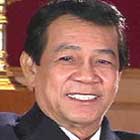 While working as a provincial board member in Cebu, Gregorio noticed that pigs sold to market were apparently malnourished.
While working as a provincial board member in Cebu, Gregorio noticed that pigs sold to market were apparently malnourished.
He decided to look into the cause of malnutrition by doing research in his spare time. Using only pots and pans in his home, Gregorio conducted several tests and experiments on how to alleviate the state of malnutrition of Cebu’s livestock.
Despite numerous failures, his persistence finally paid off. He discovered the pigs were suffering from a type of bad bacteria. His solution was a probiotic bacteria that would increase the level of good bacteria in the body.
The bacteria would be called LactoPAFI Probiotic Bacteria. Gregorio’s discovery would reach global acclaim as a leader in probiotics. It is now exported to New Zealand, Norway, France, Australia, Hong Kong, Japan, and US.
10. Diosdado Banatao, Computer Chips
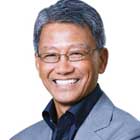 Diosdado’s life story exhibits perseverance, hope, determination, and the power of self-belief. The son of a farmer in Cagayan, Diosdado would walk barefoot just to complete his high school education. His resilience made him a Magna Cum Laude graduate in electrical engineering.
Diosdado’s life story exhibits perseverance, hope, determination, and the power of self-belief. The son of a farmer in Cagayan, Diosdado would walk barefoot just to complete his high school education. His resilience made him a Magna Cum Laude graduate in electrical engineering.
His excellence in the academe paved the way for Diosdado to become a pilot-trainee at the Philippines Airlines or PAL, which would eventually open doors for a design engineer position at Boeing Co. The opportunity brought Diosdado to the US where he completed a master’s degree in electrical engineering and computer science at Stanford University.
Diosdado’s experience working with the top technology companies led to his design of the first single-chip 16-bit microprocessor calculator. By 1981, Diosdado was commissioned by Seeq Technologies to assist the Ethernet to find an efficient way of linking computers. Disodado designed the single- chip controller that provided data-link control and the transceiver in the first 10-bit Ethernet CMOS.
His success opened doors to build his own company, Monstroni, in 1985 and Chips and Technology, which made US$ 12 million in the first quarter alone. By 1996, Diosdado sold Chips and Technology to Intel for US$ 430 million!
Throughout his success, Diosdado never forgot his roots and Filipino heritage. He set up the Banatao Filipino American Fund to lend support to Filipino American students in Northern California who aspire to become electrical engineers.
The ones who succeed are the ones who persevere…
After reading these inspiring stories from our own successful Filipino entrepreneurs, one quality easily stands out among their many admirable traits; that is, the quality of embracing failure as a necessity to achieve long-term sustainable success.
These entrepreneurs went through so many adversities and challenges in their lives. Truth be told, condensing their life stories in paragraphs does not do them justice. A better way to understand what they went through would be by imagining how we would have felt or acted if we were in the same situation.
Ask yourself:
- What would you do if your business or only source of income was destroyed like what happened to Henry Sy, Socorro Ramos, and Mariano Que?
- How would you react if you had lost everything you had gained in a blink of an eye like what happened to John Gokongwei Jr. and Cecilio Pedro?
- How would you overcome the challenge of large-sized powerful competitors as Corazon D. Ong and Cecilio Pedro faced?
- What would you do if you woke up one morning and realized you were living in extreme poverty as what Alfredo Yao, Tony Tan Catkiong, and Diosdado Banatao experienced?
- If you saw a need or a concern, would you act on it out of passion as Corazon Ong and Engr. Gregorio Sanchez Jr. did? Or would you be compelled by greed?
Failure in any form is never easy to accept. Some have described the feeling of failure from being slapped in the face to getting stabbed in the gut. It is a very painful feeling that leaves even the most powerful men helpless and stripped of dignity.
However, the ones who succeed are the ones who persevere. They acknowledge failure not as a termination point but an educational experience. It is a wake-up call on what needs to get done. These entrepreneurs had three choices to make: fight, flight, or freeze. Every single one chose to FIGHT.
Is your life worth fighting for?
If you believe in your dream, FIGHT for it. If you believe in your vision, FIGHT for it. If you believe that success is just around the corner, FIGHT for it.
Deciding to become an entrepreneur is not enough. You have to commit to it. Whatever you do from that moment on will have repercussions on your life and on those you love.
Ask yourself: Is your life worth fighting for?
All images used credit to their respective owner.
Roel Manarang is a seasoned entrepreneur who helps businesses succeed through design and digital marketing. With over 10 years of experience, he has assisted 170+ global companies. Roel is the founder of Workroom, a digital marketing company, and Tycoon Philippines, an acclaimed business and finance blog. Find him on LinkedIn.



